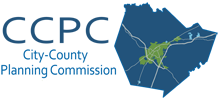A couple of recent tragic events on our local streets remind us that traffic safety is a “two-way street”. Pedestrians and cyclists are our most vulnerable users of our streets, lacking the safety of a 3,000+ pound shield. Traffic safety must be learned and practiced by both drivers and pedestrians/cyclists to save lives.
Learning safe practices early helps engrain them as lifelong habits as part of a traffic safety culture, and having the perspective of a pedestrian or cyclist can increase awareness later as a driver. Our children often learn to use their neighborhood streets before venturing with greater independence out into more traffic on faster roads. While these streets provide real-world experience, what if there were a safer version without the life-threatening consequences?
The concept of a Safety City was introduced in 1937 in Ohio by a patrol officer in response to a child traffic fatality. Child deaths had been on a steep rise since the popularization of motor vehicles and the prioritization placed on their dominance in the streets.
A safety city, or traffic garden, is a set of small-sized streets with scaled-down traffic features and urban elements where children and other new learners practice using streets in a place that is free from motor vehicles. Traffic gardens allow children to learn about traffic rules and devices, safe navigation of cities, resolution of conflicts, and how to appropriately handle interactions with other travelers on the road.
Traffic gardens can be as simple as some stripes of paint on a parking lot, or as elaborate as three-dimensional miniature cities with buildings, operational lights, and officers or crossing guards. They provide a safe space that children can use alone but become more realistic learning tools when used for physical education programs, after-school programs, and bike rodeos. Cycling in a simulated street environment can also help foster the idea of community investment in active transportation.
A relatively small investment of space and resources could create a traffic garden for Bowling Green and Warren County’s children to learn how to use our streets more safely, both as pedestrians/cyclists, and as drivers in years to come. Modern street designs still favor motor vehicles, and safe streets is a responsibility we all share.
The photos below show an example from a recently constructed traffic garden in Dayton, OH. Photos courtesy of Tristate Trails.



